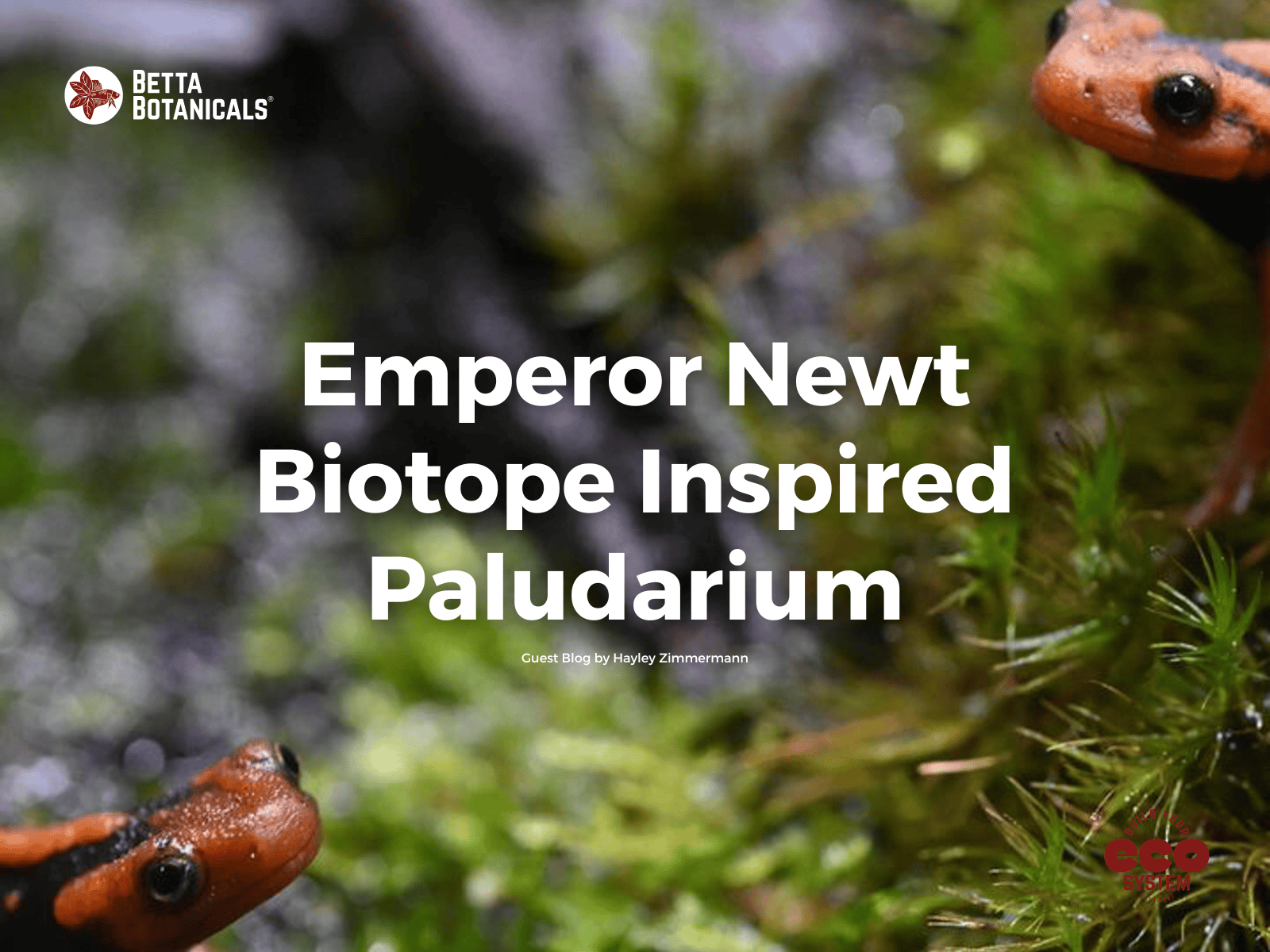The Best and Worst Ways to Lower an Aquarium's pH
What is pH and the 'Potential of Hydrogen'?
pH is the “potential of hydrogen” which measures hydrogen ion activity within a liquid. For aquarists, pH is a figure used to express how acidic or basic the water of your aquarium is. pH is ranked on a scale of 1-14; 7 represents neutral which is neither acidic nor basic, where equal amounts of acids and bases are present in the water. A pH of 1 to 6.9 is considered acidic and a pH of 7.1 to 14 is considered basic. Understanding pH is a critical part of fish keeping and it is important to test your aquarium pH regularly with a liquid test kit or pH strips to help ensure your fish stay happy and healthy. Most fish have a preferred pH range based on their native habitat; matching those parameters will help your fish stay happy and healthy.

Why Do Fish Keepers Care About pH?
At the end of the day you don't really need to be concerned about pH unless you are keeping wild fish, or they desire a pH that is at the far ends of either side of the spectrum. But let's pretend you do care about what you pH is. pH in your aquarium can be affected by a variety of factors. The water directly from your tap or RO system is one of the primary factors that determine the pH in your aquarium. Your pH can be naturally acidic or basic depending on its source (for example, are you on well water or city water? Do you have an RO system installed in your home?). Before filling your aquarium, it is a good idea to test your tap water to determine its pH. This will let you know whether you need to raise or lower the pH to match your desired parameters. To do this we recommend adding some tap water to a glass and letting it sit overnight. This allows any gases to dissipate from the water which could have accumulated as it flowed through the pipes where you live.
@ltdansplantedtanks Replying to @bettabotanicals pH balancing, buffers, and organic decay. Let’s talk about water chemistry! #chemistry #ph #kh #biology #education #fishtok #aquarium #stemeducation ♬ original sound - Lt Dan
If you are creating a blackwater or botanical method aquarium, the number of tannins and other humic substances in your water can also affect your pH. Additionally, your choice of substrate can affect your pH. Some aqua soils are very acidic and can drop your pH/soften your water. If you are starting with basic water and want to lower your pH, choosing acidic aqua soil or building up tannins can help you reach your desired parameters. The most sneaky way that the pH of your aquarium could be impacted is through the choice of rocks you use. Always test them to ensure they are inert because more often than not they are the culprit for why your pH is so high.

pH in Planted Aquariums
If you have a heavily planted aquarium, the pH of the water changes on a natural 24-hour cycle. This is due to the process of photosynthesis in plants. Plants photosynthesize (absorbing CO2 and releasing O2) as their stomata open and close throughout the day. In the early morning, CO2 concentrations are at their highest. There was no photosynthesis performed overnight, thus no CO2 was absorbed by your plants. When the sun rises, the plants' stomata open and perform gas exchange, absorbing CO2 and releasing O2. Throughout the day, the CO2 in your water is absorbed to carry out photosynthesis and its concentration in the water will go down. Therefore, your aquarium water may test as more acidic in the morning than in the late afternoon or evening.
If your water has a high carbonate hardness (KH), you may notice changes in pH less than if your water is softer. This is because carbonate hardness acts as a buffer against shifts in pH. Think of it like insulation in a coffee mug, the better the insulation the better the mug holds its temp.
What is Old Tank Syndrome?
Your carbonate hardness prevents sudden, dramatic changes in your aquarium water’s pH. High carbonate hardness keeps your aquarium parameters stable, which can lead to healthier fish. However, the bicarbonates that contribute to your overall carbonate hardness are used by the biofilter over time. If you don’t perform regular water changes or add supplementation to your aquarium, your water hardness can decrease over time. This can lead to sudden drops in pH that can stress or kill your tank inhabitants. In the aquarium hobby, this is called “old tank syndrome”.
Why Would I Want to Lower My pH?
Most fish have an ideal pH range that allows them to be healthy and thrive. Many tropical freshwater fish in the hobby prefer slightly to very acidic water conditions, but it's important to research the specific fish you are keeping to see if they require a very specific pH. If your water source is basic, you may want to lower the pH before adding it to your aquarium to better suit the fish you’re keeping.

pH in Blackwater Aquariums
If you plan to set up a blackwater ecosystem aquarium, you may need to lower your pH. Unlike botanical method aquariums, which don’t have set parameters, blackwater aquarists aim to achieve a specific pH, GH, and KH in their tanks. Usually, blackwater tanks have a pH between 3.6 and 5.4 (7 is neutral) and have little to no dissolved minerals. Blackwater aquarium hobbyists attempt to recreate vernal pool and river basin ecosystems that are easily influenced by the acids from decomposing organic material by using RO or RODI water which has almost no buffering capacity, thus it is easily influenced by the acids found in botanicals.
@bettabotanicals Replying to @fatrolls4life TL;DR, changing the pH of tap water when any bases is present is hard to do unless you use alder cones, macaranga, or peat moss. #blackwateraquarium #bettabotanicals #botanicalstyleaquarium #aquariumph #botanicalmethodaquarium #freshwateraquarium ♬ Astro Beat - Staysee
How Does pH Influence Nitrifying Bacteria?
Your fish, plants, and invertebrates aren’t the only living things in your aquarium. Your nitrifying bacteria, the beneficial bacteria that live in your filter and substrate, are living creatures with an ideal pH range just like your fish. When you cycle your aquarium, you are building up the nitrifying bacteria colonies that process ammonia and nitrogen in the water. Ammonia, nitrite, and nitrate are toxic to your fish and other aquarium inhabitants. If enough nitrogen compounds build up in the right amounts, then you could risk crashing your tank.
The ammonia oxidation process that converts ammonia to nitrate in your aquarium occurs best between a pH of 7 and 8. If the pH in your tank rises above 8 or drops below 6, the nitrifying bacteria may be inhibited. But, at acidic pH’s ammonia (NH3) turns into its less toxic form, Ammonium (NH4). This is beneficial as plants can still absorb NH4, so while the nitrifying bacteria is doing a poor job at converting to nitrates, any plant or algae in your aquarium is picking up the slack.
Top Three Ways to Alter pH
- Perform a water exchange
- Add a Chemical Buffer
- Add Botanicals to RO or RODI Water
Perform Water Changes to Raise the pH
Water changes are one of the sneakiest ways to prevent your pH from dropping. More often than not an aquarium will not have the same pH as your tap water, especially if you used RO/RODI water which has zero buffering capacity. A water change will replenish a small amount of buffering capacity to the ecosystem and move the pH more basic, but if you have fish who want an acidic environment this could be a bad thing. When preparing water for fish who thrive in acidic environments it is important that you condition this water with botanicals beforehand to replenish the acids needed to recreate their ideal pH. We love using coconut, macaranga (this one is strong), alder cones, catappa bark, or peat moss.

Add Chemical Buffers to Lower the pH
We think it’s important that we cover chemical buffers in this blog, and while these are our least favorite way to lower our aquariums' pH, they do work if you have no other option. To quickly lower the pH of your aquarium you can use a chemical buffer during a water change. A chemical buffer is an acid or a base that you can add to your water to adjust the pH parameters. These are usually available in pet stores or your local fish store, but be sure to carefully follow the product’s instructions when using a chemical buffer. Usually, one or two drops are enough to adjust the pH to your preferred parameters, and you should always mix this in a bucket and let it stabilize overnight before adding it to the aquarium. If you accidentally use too much chemical buffer, you can change your pH too quickly and stress your fish. We always will recommend the use of botanicals and RO water for adjusting the pH.
There is one way to lower the pH of RO water using chemicals, but we will dedicate an entire blog post to that method after we have done it ourselves. It requires lab-grade acids lol.
Add Tannins to Lower your pH
At Betta Botanicals, we always advocate for the most natural aquarium maintenance methods. Science has shown that the substances released by decomposing botanicals contain acids (think humic acid, fulvic acid, and tannic acid) and can lower the pH of your water. If you want to slowly and naturally lower your pH over time, try adding high-tannin botanicals like alder cones to your aquarium, or macaranga leaves (our most sour leaf!). This allows you to mimic your fish's native ecosystems while maintaining your desired water parameters.
*High-tannin botanicals will change your water color and lower your pH more than low-tannin ones. If you have high GH and KH readings, low-tannin botanicals may not affect your pH at all.
What is the Best Way to Lower the pH of an Aquarium?
There are many methods to lower the pH of your aquarium. Of the above methods, we highly recommend using tannins + RO/RODI in place of chemical buffers to achieve your ideal parameters. If you struggle with maintaining a low pH because your water source is basic and the above methods don’t work for you, don’t worry! Have you checked the rocks you added to your aquarium? While it is better to create the pH that your respective fish prefer, keeping your parameters stable is one of the most important things you can do. A sudden change in temperature, hardness, or pH is more dangerous for your aquarium inhabitants than not having a perfect pH. Good luck, and happy fishkeeping!








Inspire your friends:
Benefits of Alder Cones in Botanical Method & Blackwater Aquariums
A Guide to Using RODI Water in Blackwater Aquariums
1 comment
This is such a great article! I’ve worked in fish stores for about 9 years off & on and this is almost verbatim what I’ve been telling my customers. This article will be easy to share with them when they’re having a hard time understanding what I’m trying to explain. You’ve illustrated everything in a way that’ll be easier for them to understand.
Thank you so much for taking the time to write it.